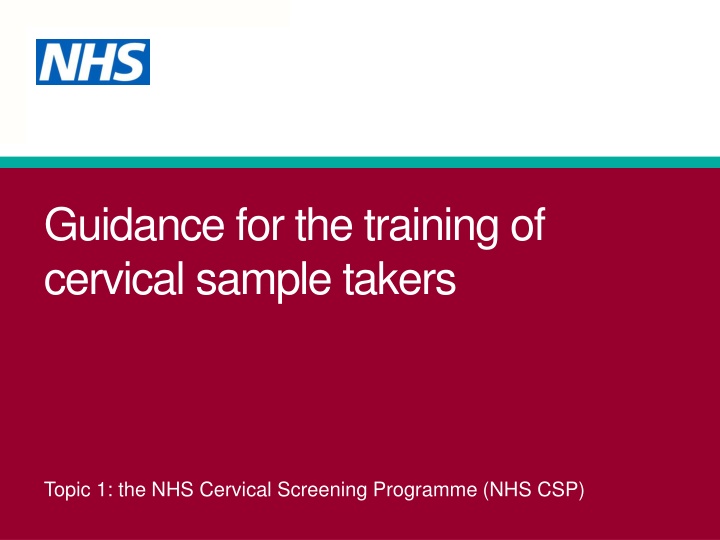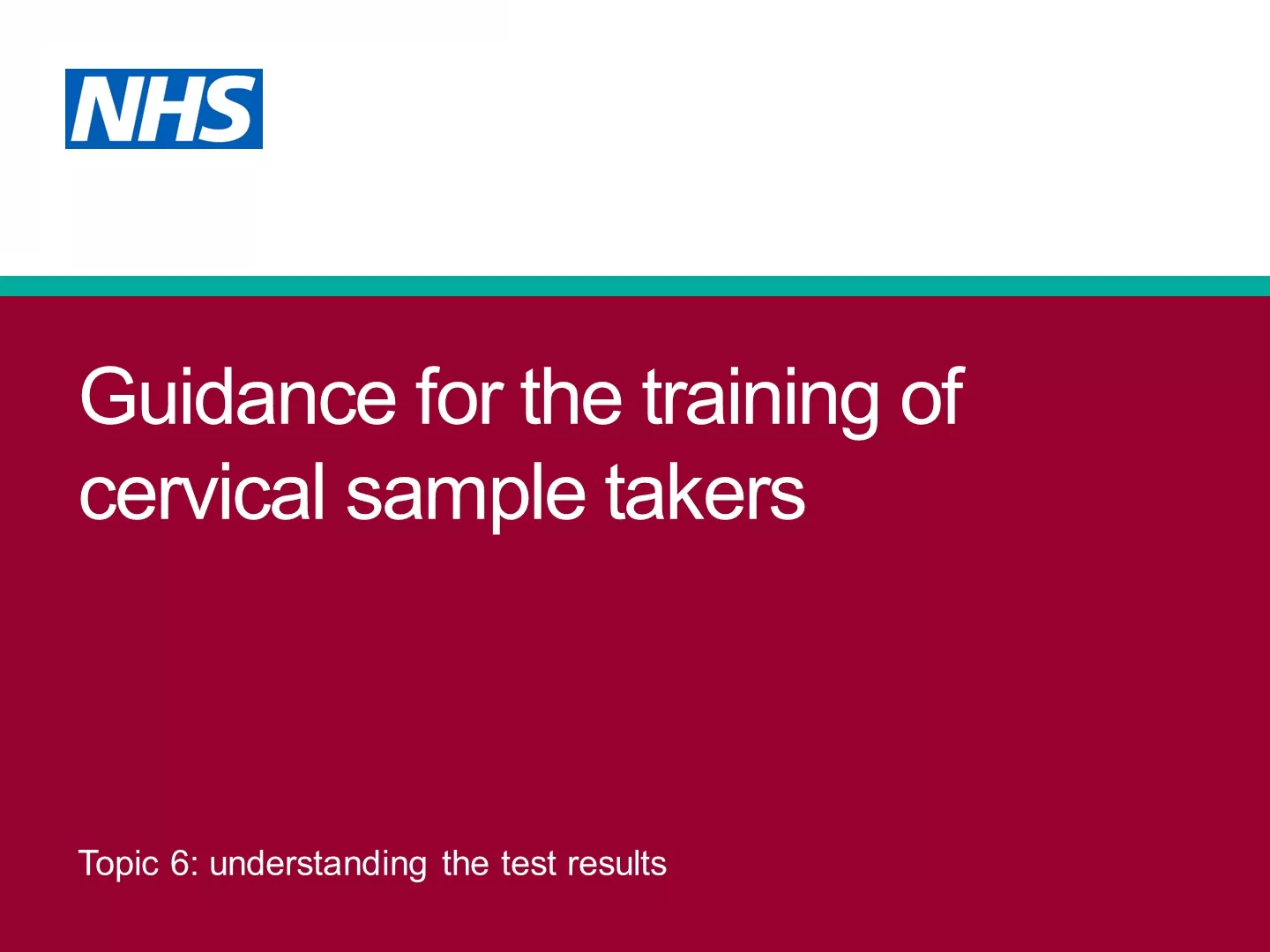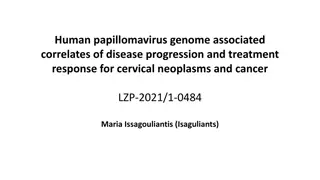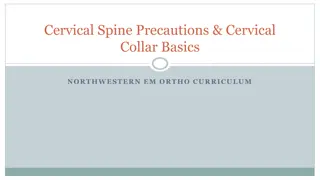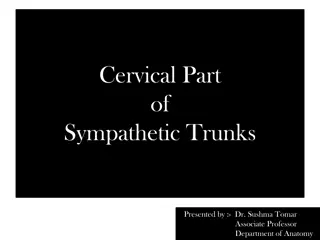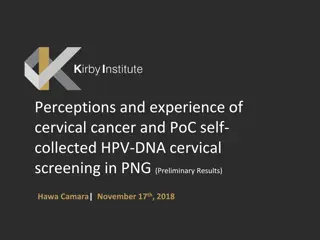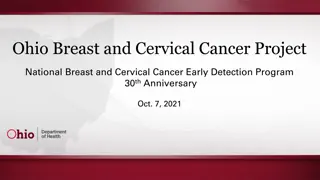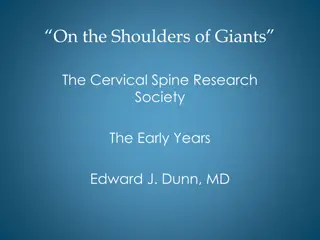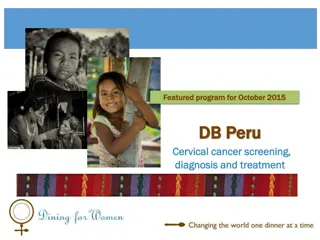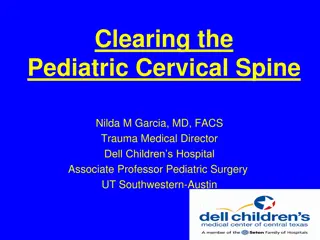Overview of the NHS Cervical Screening Programme
The NHS Cervical Screening Programme aims to reduce the incidence and mortality of invasive cervical cancer by offering regular screening to eligible individuals. It covers the history, population screening programmes, and key milestones. Learn about the importance, coverage, and guidelines of the programme through provided resources.
Download Presentation

Please find below an Image/Link to download the presentation.
The content on the website is provided AS IS for your information and personal use only. It may not be sold, licensed, or shared on other websites without obtaining consent from the author.If you encounter any issues during the download, it is possible that the publisher has removed the file from their server.
You are allowed to download the files provided on this website for personal or commercial use, subject to the condition that they are used lawfully. All files are the property of their respective owners.
The content on the website is provided AS IS for your information and personal use only. It may not be sold, licensed, or shared on other websites without obtaining consent from the author.
E N D
Presentation Transcript
Guidance for the training of cervical sample takers Topic 1: the NHS Cervical Screening Programme (NHS CSP)
Note Use these slides in conjunction with the NHS Cervical Screening Programme publication Guidance for the training of cervical sample takers , available at: www.gov.uk/government/publications/cervical-screening-cervical-sample-taker- training 2 Topic 1: the NHS Cervical Screening Programme (NHS CSP)
Population screening programmes The GOV.UK website provides information about all population screening programmes. GOV.UK also hosts: an overview of the cervical screening programme coverage and data information cervical screening information leaflets cervical screening professional guidance programme standards cervical screening education and training guidance guidance on managing incidents guidance on informed consent for screening Information for the public is available at: www.nhs.uk/conditions/cervical-screening-test/pages/introduction.aspx 3 Topic 1: the NHS Cervical Screening Programme (NHS CSP)
Aims of the screening programme The main aims are to: reduce the number of people who develop invasive cervical cancer (incidence) reduce the number of people who die from it (mortality) People aged 24.5 to 64 who have a cervix are eligible for regular screening to identify and treat conditions which might otherwise develop into invasive cancer. 4 Topic 1: the NHS Cervical Screening Programme (NHS CSP)
History of the cervical screening programme Significant milestones in the NHS CSP include: 1960s: cervical screening began 1988: the NHS CSP was set up with the introduction of computerised call and recall systems 2004: introduction of liquid-based cytology (LBC); this has significantly reduced the amount of inadequate cervical screening results 2008: introduction of the national human papillomavirus (HPV) vaccination programme; England started offering HPV vaccination to all girls aged 12 to13 2012: introduction of HPV triage and test of cure 2019: introduction of primary HPV testing in England to replace cytology as the primary screening test 2019: HPV vaccine routinely offered to boys aged 12 to 13 5 Topic 1: the NHS Cervical Screening Programme (NHS CSP)
Current statistics Refer to Cervical Screening Programme Coverage Statistics for the latest cervical screening statistics on: the total number of people aged 25 to 64 invited for screening in England the number of people aged up to 65 tested in England the percentage of eligible people aged 25 to 64 screened at least once in the past 5 years https://digital.nhs.uk/data-and-information/publications/statistical/cervical- screening-programme/cervical-screening-programme-coverage-statistics- management-information 6 Topic 1: the NHS Cervical Screening Programme (NHS CSP)
Important elements in the success of the programme Notable accomplishments and functions in the screening programme include: the identification and invitation of all eligible people (registered as female or indeterminate ) at appropriate screening intervals (individuals aged between 24.5 and 64 years who have a cervix) the achievement of at least 80% coverage of eligible individuals the availability of information for people to help them make an informed choice about whether or not to come for cervical screening the importance of a team approach to ensure continuity of care for the individual an operating model which describes quality assurance processes that are supported by clear administrative and clinical protocols acknowledging the barriers to screening being aware of the psychological aspects of intimate examinations 7 Topic 1: the NHS Cervical Screening Programme (NHS CSP)
The individuals experience of screening The sample taker plays a crucial role in the individual s experience. This includes: working together to address any anxieties and put them at ease addressing their individual needs both physically and psychologically giving accurate information to make an informed choice providing a positive cervical screening experience explaining, discussing and acting on results possible treatment options should the results be abnormal A negative cervical screening experience may result in anxiety about the procedure itself and potentially discourage a person from attending again. Poor information can result in confusion and anxiety regarding HPV (its links to cervical cancer and risk factors around contracting it). 8 Topic 1: the NHS Cervical Screening Programme (NHS CSP)
Barriers to cervical screening Issues that can make it hard for people to attend cervical screening include: accessibility, including the availability of appointments, finding time to attend (getting an appointment at a convenient time) and choice of where to be screened (such as sexual health clinic or GP surgery) fear of having the test due to embarrassment, fear of the test being painful, a previous bad experience at screening, postnatal concerns due to trauma during birth, or a history of sexual assault or rape experiencing pain or discomfort during the test (this particularly an issue for post-menopausal people) not understanding the relevance of screening, the role of HPV in cervical cancer, or how screening helps prevent cancer language barriers, cultural and religious beliefs sexual orientation and other gender-related issues (for example lesbian women being told they do not need screening) 9 Topic 1: the NHS Cervical Screening Programme (NHS CSP)
Routine screening intervals Age group (years) 24.5 25 to 49 50 to 64 65+ Frequency of screening First invitation 3-yearly 5-yearly Invitation as required for people who have had recent abnormal tests. People who have not had an adequate screening test reported since age 50 may be screened on request 10 Topic 1: the NHS Cervical Screening Programme (NHS CSP)
First and subsequent invitations We send out a first invitation for routine screening 6 months before the person turns 25. This gives them time to consider attending, and book an appointment by the age of 25. We send out all subsequent invitations (either 3-yearly or 5-yearly) about 6 weeks before the person s next test due date (NTDD). A delay of several months may occur between the issuing of invitations to people and the date of their screening test. Sending invitations well before test due dates reduces possible delays. 11 Topic 1: the NHS Cervical Screening Programme (NHS CSP)
Transgender (trans) men Trans men who still have a cervix are eligible for screening. Trans men registered with their GP as female will receive automatic screening invitations. Trans men registered as male do not receive an invitation, but remain entitled to screening and should arrange an appointment with their GP practice every 3 to 5 years (depending on their age). 12 Topic 1: the NHS Cervical Screening Programme (NHS CSP)
People under the age of 24.5 We do not invite people under the age of 24.5 for cervical screening because: cervical cancer is very rare in people under 25 infection with high risk human papillomavirus (hrHPV) is very common in people under 25 and may cause abnormal cell changes of the cervix; for most people these cervical abnormalities will regress as the immune system clears the HPV infection an abnormal screening result and treatment for cervical abnormalities can cause anxiety for many people the International Agency for Research on Cancer (IARC) recommends that people should not start cervical screening before the age of 25 in 2012, the United Kingdom National Screening Committee (UK NSC) advised the NHS CSP that screening under 25 does more harm than good and recommended a consistent screening age across the whole of the UK (since June 2016 all 4 nations screen from age 25) the number of younger people diagnosed with cervical cancer is likely to reduce due to the NHS HPV vaccination programme introduced in 2008 13 Topic 1: the NHS Cervical Screening Programme (NHS CSP)
People over age 64 We do not invite people over the age of 64 for cervical screening because: the natural history and progression of cervical cancer means that it is highly unlikely that such people will go on to develop the disease; those aged 65 and over who have had 3 consecutive negative tests are taken out of the call and recall system People aged 65 and over who have never been screened or have an incomplete screening record are entitled to a test if they request one. 14 Topic 1: the NHS Cervical Screening Programme (NHS CSP)
People who are not sexually active The NHS CSP invites all eligible people between the ages of 24.5 and 64 (and registered as female or indeterminate ) for cervical screening. If a person has never had sexual contact with a male or female, research evidence shows that their chance of developing cervical cancer is very low. This is not no risk , only very low risk. In these circumstances, an individual might choose to decline the invitation for cervical screening. The term sexual contact includes: vaginal, oral or anal sex any skin-to-skin contact that includes the genital area sharing sex toys If a person is not currently sexually active but has had sexual partners in the past, we recommend they continue to attend for screening. 15 Topic 1: the NHS Cervical Screening Programme (NHS CSP)
People aged under 25 with abnormal vaginal bleeding People who experience vaginal bleeding after sex and/or in between periods require a pelvic examination. A trained nurse, doctor or registered physician associate can perform a speculum examination. A trained GP can perform a pelvic examination. Vaginal bleeding is extremely common and can have a range of causes, including normal conditions such as: cervical ectropion hormonal changes due to the contraceptive pill benign cervical polyps sexually transmitted infections such as chlamydia Department of Health and Social Care (DHSC) guidance explains the types of questions that sample takers need to ask people to establish if their symptoms relate to cervical cancer. www.gov.uk/government/publications/abnormal-vaginal-bleeding-in-women-under-25-clinical- assessment 16 Topic 1: the NHS Cervical Screening Programme (NHS CSP)
Non-NHS cervical screening tests People who have a sample taken privately remain eligible for screening under the NHS at the standard intervals. As the NHS cannot quality assure private tests, the results of non-NHS tests can be added to a person s NHS screening record but must not affect their NHS recall due date, unless this is required to meet NHS policy on the management of people with abnormal results. 17 Topic 1: the NHS Cervical Screening Programme (NHS CSP)
Unscheduled cervical screening tests Do not carry out additional tests if an individual is in the screening age group and has had a test in the previous routine screening interval (3 to 5 years). Additional tests are not needed for someone because they: are attending for contraceptive advice or services are attending for advice on hormone replacement therapy are pregnant or attending for postnatal services have genital warts have vaginal discharge have an infection have had multiple sexual partners are heavy smokers have a family history of cervical cancer The laboratory will not accept unscheduled samples, and will reject the test (see national guidance on sample acceptance). The sample taker should explore the reason(s) for the individual requesting screening and, if appropriate, examine and refer accordingly. www.gov.uk/government/publications/cervical-screening-accepting-samples-in-laboratories 18 Topic 1: the NHS Cervical Screening Programme (NHS CSP)
Guidance for the training of cervical sample takers End of Topic 1. The NHS Cervical Screening Programme (NHS CSP) 19 Topic 1: the NHS Cervical Screening Programme (NHS CSP)
